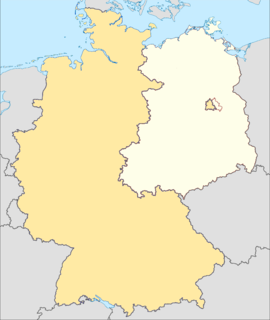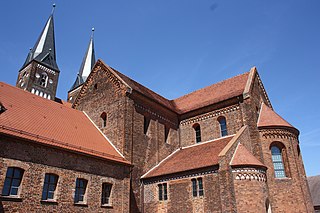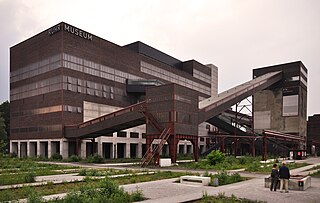 W
WThe Borderland Museum Eichsfeld is a history museum located in Central Germany at the former inner-German border between East and West Germany. It deals with the Cold War in general and the German division in specific.
 W
WThe German Railway History Company or DGEG is a society concerned with the history of the railways. The objectives of the society are:to generate and maintain interest and understanding for the history of the railways within the framework of overall history, to foster scientific studies in this area, to preserve and maintain important cultural and technological monuments.
 W
WThe European Hansemuseum is a museum in Lübeck, Germany dedicated to the history of the Hanseatic League. Covering an area of in total 7,405 square metres (79,710 sq ft), is the largest museum in the world specifically dedicated to this subject. The museum was opened in May 2015.
 W
WThe German Castle Museum is a history museum at Heldburg Fortress in the region of Heldburger Land and in the county of Hildburghausen in the German state of Thuringia.
 W
WNumerous museums of the inner German border are located along the course of the former border between East and West Germany, documenting its story and in some places preserving original elements of the border fortifications.
 W
WThe Jerichow Monastery is a former Premonstratensian monastery located in the northern outskirts of Jerichow, near the shores of the Elbe River, in the state of Saxony-Anhalt of Germany.
 W
WA Karzer was a designated lock-up or detention room to incarcerate students as a punishment, within the jurisdiction of some institutions of learning in Germany and German-language universities abroad. Karzers existed both at universities and at gymnasiums in Germany until the beginning of the 20th century. Marburg's last Karzer inmate, for example, was registered as late as 1931. Responsible for the administration of the Karzer was the so-called Pedell, or during later times Karzerwärter. While Karzer arrest was originally a severe punishment, the respect for this punishment diminished with time, particularly in the 19th century, as it became a matter of honour to have been incarcerated at least once during one's time at university. At the end of the 19th century, as the students in the cell became responsible for their own food and drink and the receiving of visitors became permitted, the "punishment" would often turn into a social occasion with excessive consumption of alcohol.
 W
WThe Klaus-Groth-Museum is a museum in Heide, Germany. It was established in 1914 in the birthplace of the Low German poet Klaus Groth (1819-1899). After the city of Heide purchased the dilapidated house, it was renovated while striving to preserve the original look of the gable house that was built in 1796 by Groth’s grandfather. Amongst other things, the room Klaus Groth was born in was reconstructed. A drawing by painter Otto Speckter from 1853 served as orientation. Citizens of Heide donated furniture and books to re-equip the interior.
 W
WMonrepos is an archaeological research centre and a museum for the human behavioural evolution located at Schloss Monrepos in Neuwied. On the one hand, the development of our modern human behaviour in the Palaeolithic and Mesolithic is studied at the research centre and on the other hand, the findings of these studies are conveyed to the public in the museum. Monrepos is one of the leading institutions for the research of early human history.
 W
Wmuseum-digital is a project of museums to collaboratively publish their data online. Increasingly, it has also been targeting inventorization. Having published information on over 281,000 objects in Germany and 95,000 objects in Hungary, the project's work is currently focused on these countries.
 W
WThe Prinzhorn Collection is a German collection of art made by mental health patients, housed at the Heidelberg University Hospital. The collection comprises over 20,000 works, including works by Emma Hauck, Agnes Richter and August Natterer.
 W
WThe Ruhr Museum, formerly the Ruhrland Museum, is a diverse natural history and cultural history museum for the Ruhrgebiet in Essen, Germany. The sponsor is the Stiftung Ruhr Museum. Director since 2012 is the historian Heinrich Theodor Grütter.